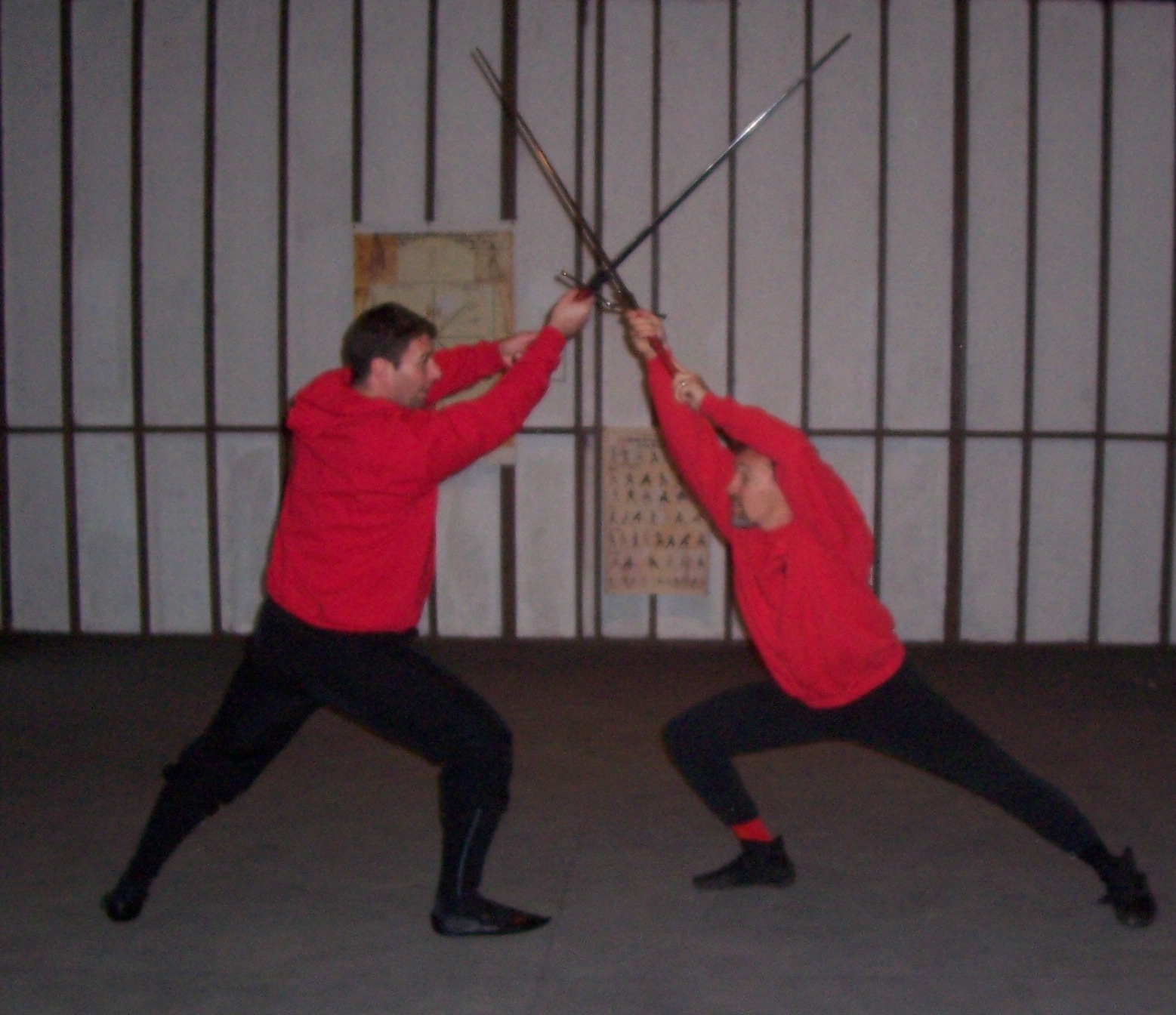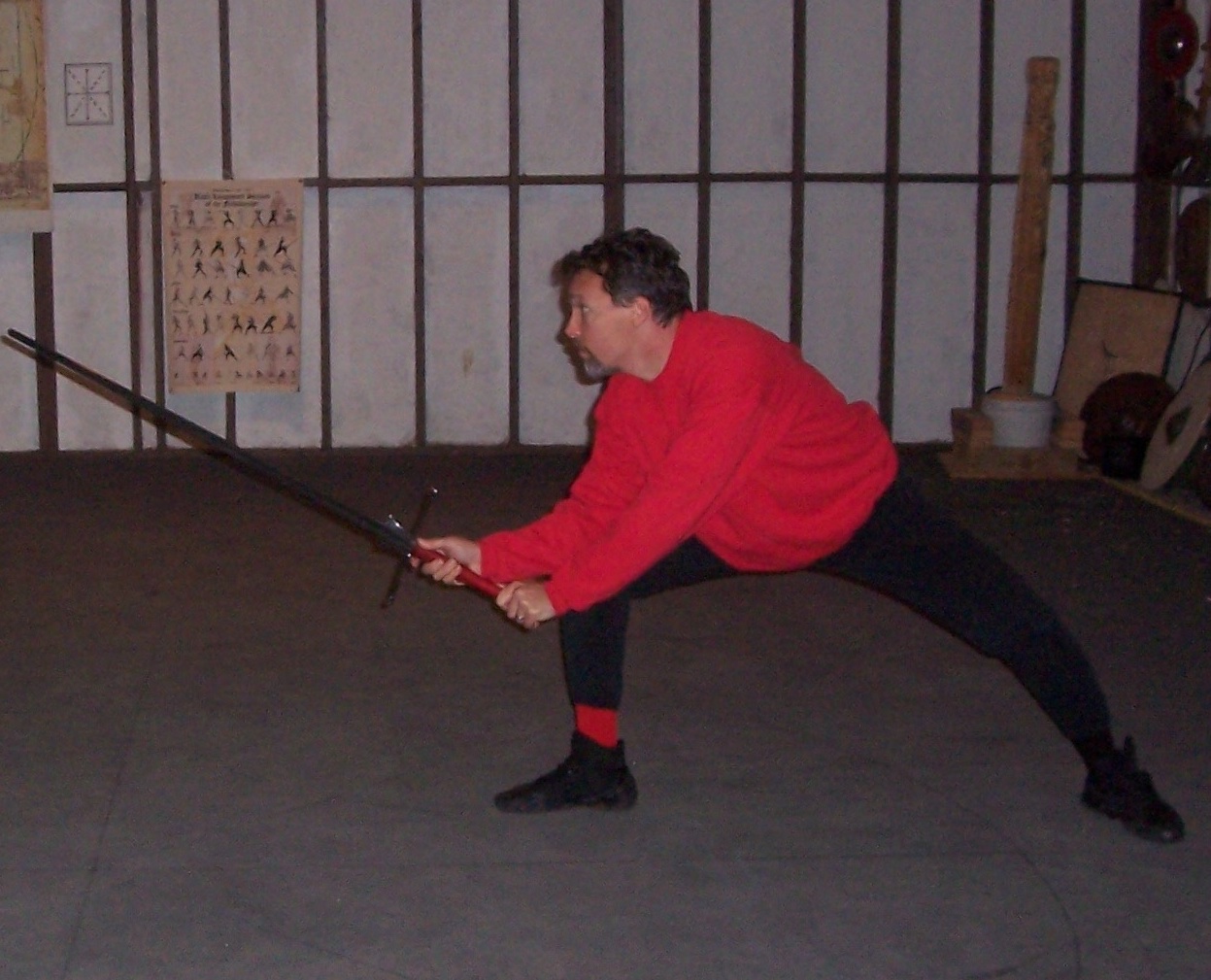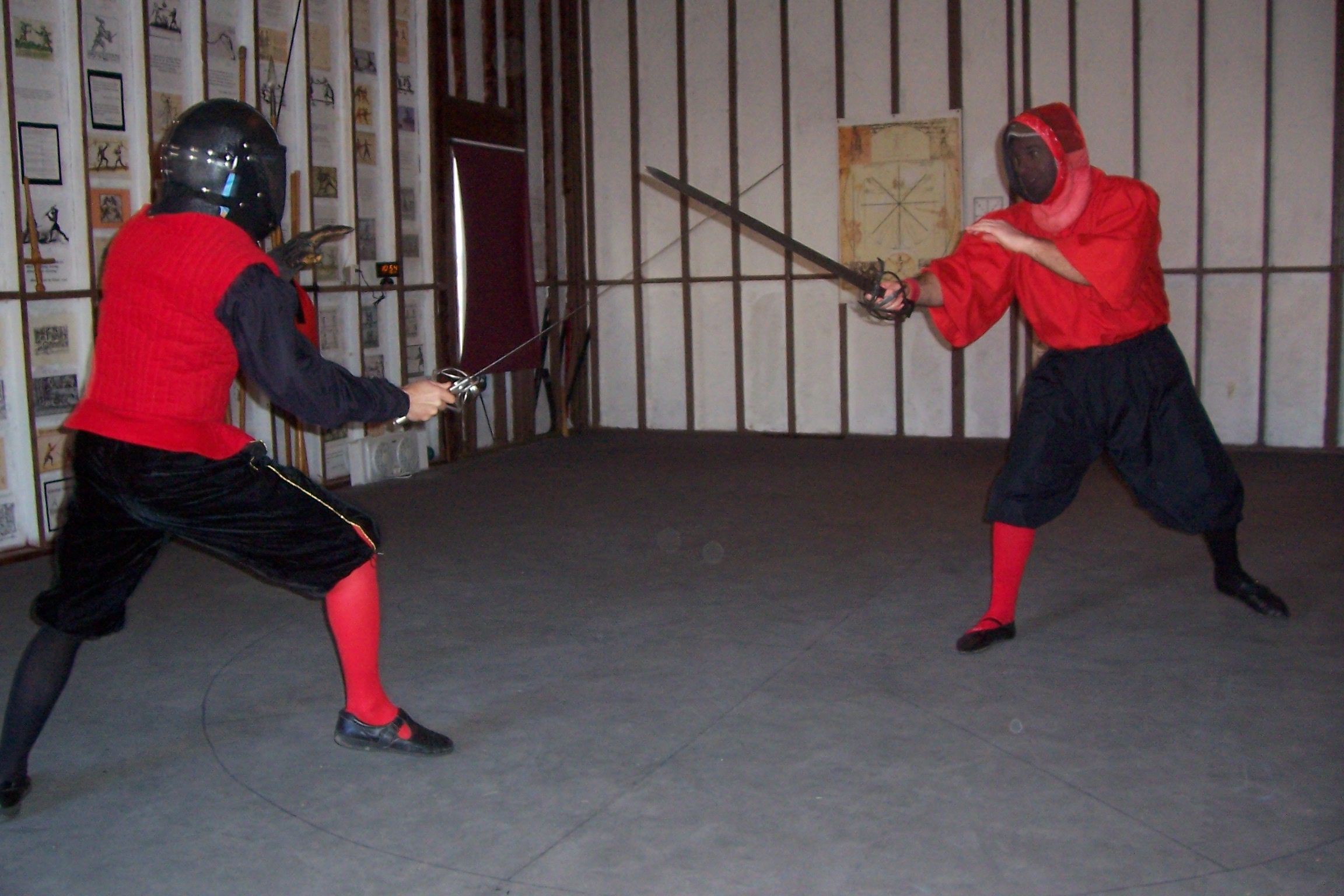 Reclaiming
the Art of the Blade Reclaiming
the Art of the Blade
By
John Clements
ARMA Director
Interest in Medieval and Renaissance close combat has exploded in recent
years as the study of authentic European martial arts currently undergoes
an unprecedented revival. The rich historical teachings of the Renaissance
Masters of Defence provide a wealth of timeless wisdom for any modern
fighter, military man, or martial artist. The volumes of these unparalleled
works reveal formidable skills taught with systematic depth and well-established
principles.
Through focus on this little-known literature, a resurrection of these
extinct combative systems is now underway. More material has been published
on the topic in the last decade alone, than in the last two hundred years.
Interpretive-analysis of these teachings has occurred largely outside
the confines of living-history efforts, modern fencing sports, or theatrical
fight directing. Turning the classical view of fencing history on its
head, modern-era fencing styles are revealed as comparatively simplistic
next to the undeniably sophisticated systems of self-defense from the
Renaissance. But precisely because modern-era fencers did not inherit
much at all from the forgotten legacy of these martial arts, it is up
to a new generation to recover it.
ARMA - the Association for Renaissance Martial Arts - is the largest
active effort underway to seriously study this craft today. As an international
non-profit educational organization dedicated to the practice of historical
fencing, the ARMA focuses on the reconstruction of Renaissance combat
teachings as a modern discipline.
Not content with the artificial sporting play of modern fencing, with
its contrived duelling weapons and limiting restrictions, the ARMA directs
effort toward resurrecting a legitimate craft of indigenous European fighting
arts in a manner that is historically valid and martially sound. Working
together under a shared approach, its members conduct academic research
and hands-on training using accurate reproduction arms and armor from
the 13th through 17th centuries. Its members celebrate a common fascination
with the study of Medieval and Renaissance swords.
 Raising the credibility and standards of practice among enthusiasts,
while confronting myth and misinformation among the public, the ARMA's
fellowship is credited with considerable accomplishments in the field
of historical fencing studies. Conceived to fill the void left
by living-history reenactment, stunt fencing, and classical fencing sports,
the efforts of the ARMA's pioneering approach over the last decade continue
to be both influential and cutting edge. Raising the credibility and standards of practice among enthusiasts,
while confronting myth and misinformation among the public, the ARMA's
fellowship is credited with considerable accomplishments in the field
of historical fencing studies. Conceived to fill the void left
by living-history reenactment, stunt fencing, and classical fencing sports,
the efforts of the ARMA's pioneering approach over the last decade continue
to be both influential and cutting edge.
Rejecting made up methods as well as approaches derivative of Asian styles
or the vestigial remnants found in modern fencing, the ARMA championed
an approach based on careful reconstruction of the forgotten source works.
The ARMA's philosophy toward exploration of our Western martial heritage
accepts that reconstructive interpretation of these lost combatives
requires approaching study of the source teachings as true martial
disciplines - self-defense methods necessitating committed exercise
with the appropriate physical and mental rigor.
An appreciation for the underlying biomechanics of personal close-combat
is a prerequisite, for no educated opinion on the practice and application
of these fighting methods can be offered if it is not informed by vigorous
physical exercise, hands-on experience with the proper implements, and
appreciation for the inherent athleticism and violence of the activity.
The chief dilemma in this lies in understanding the difference between
"fencing and fighting" - or the distinction between the
practical application of skills in earnest, and their safe use under conditions
of non-lethal practice. In either case, sincere training requires mental
and emotional control.
In this, one thing is certain: genuine Renaissance martial arts cannot
be revived through artificial routines and staged play-fights - activities
which were never a concern of the historical fighting methods. Nor
can the historical teachings be realized through today's contrived styles
of Baroque-derived foil, epee, and saber dueling sports. Though the arts
of war have always had recreational aspects, this was never central.
Originally, for the fighting man the central issue of the Art of Defense
was first and foremost a matter of directed violence for self-protection
- not of stunt display, sporting contest, or aesthetic performance.
It was undeniably defined by energetic and violent action demanding a
certain degree of physical conditioning. This is the main distinction
between study of the historical craft then, and its modern pursuit now.
 Proper study demands these skills be pursued the way they were intended
- as fighting arts. Techniques must be learned and exercised with
proper intent, in a manner that would be effective against combatants
actually trying to cause injury. Techniques cannot be performed
softly and slowly, or by operatic motions and patterned "dancing."
They cannot be considered credibly by pretentious costumed escapism,
as choreographed stunt, academic curiosities, or mere fantasy recreation. Proper study demands these skills be pursued the way they were intended
- as fighting arts. Techniques must be learned and exercised with
proper intent, in a manner that would be effective against combatants
actually trying to cause injury. Techniques cannot be performed
softly and slowly, or by operatic motions and patterned "dancing."
They cannot be considered credibly by pretentious costumed escapism,
as choreographed stunt, academic curiosities, or mere fantasy recreation.
While most people today are, with few exceptions, largely clueless about
the nature of personal violence in the real world - either historical
or modern - personal fighting skills from the Middle Ages and Renaissance
were very much about such bloodshed and war. They were about men struggling
against adversaries bent on their destruction; about trying to avenge
and protect their comrades or loved ones by taking life and doing harm.
It was not is simply a matter of calmly entering into single combats with
social peers on some terms of polite decorum and acceptable rules.
Rather, the general norm of martial history was sudden assault, drunken
brawl, street fighting, and battlefield survival. Yet, the more ritual
elements of romantic feats of arms and formal duels of honor, as well
as knightly tournaments and other non-lethal combats, tend to obscure
the larger underlying reality. Such a picture then complicates views of
the forgotten martial arts of the Renaissance - and how we today
proceed to reconstruct and redevelop its authentic methods.
It is by careful examination of the source teachings of the Renaissance
Masters of Defence, approaching their methods athletically as self-defense
disciplines while meticulously analyzing their images and texts, and exercising
in their techniques through spirited training with accurate replicas of
their tools, that the lost Martial Arts of Renaissance Europe are finally
being resurrected. Dedicated study and practice then reveals the craft
of Renaissance fencing as something far beyond the dueling sports, stunt
displays, and costumed role-play that have epitomized the subject of historical
European close-combat for most of the past six decades.
 Though there are problems of reconstruction in this subject, dealing
with understanding the actual historical manner of training and practice,
their specific modes of learning, and the application elements or techniques,
the source teachings have proven themselves accessible. As has not been
possible in generations, we are able now to approximate these lost methods
of combat and demonstrate their skills and techniques with considerable
proficiency. Much of what we now know of their highly effective teachings
is continually refining and expanding. There are still many questions
the source manuals leave unanswered. But there can be little doubt that
by carefully following the source manuals, modern students are now able
to "fill in the blanks." Though there are problems of reconstruction in this subject, dealing
with understanding the actual historical manner of training and practice,
their specific modes of learning, and the application elements or techniques,
the source teachings have proven themselves accessible. As has not been
possible in generations, we are able now to approximate these lost methods
of combat and demonstrate their skills and techniques with considerable
proficiency. Much of what we now know of their highly effective teachings
is continually refining and expanding. There are still many questions
the source manuals leave unanswered. But there can be little doubt that
by carefully following the source manuals, modern students are now able
to "fill in the blanks."
Serious investigation of Renaissance Martial Arts is still in its infancy.
Its pursuit requires the knowledge to challenge prevailing ignorance and
needless pretense, as well as rising orthodoxy. The test before us is
to do so in a manner that is both historical as well as effective. This
is also why it's foolish at present to claim "mastery" over
extinct combat arts that are still being carefully reconstructed, and
too often, only feebly demonstrated.
Appreciation of these facts is arguably what truly distinguishes some
practitioners of the craft from others today. For the skilful application
of accurately reconstructed source teachings does not commend itself well
to frivolous recreational activities. The martial legacy of our forebears
and the lessons they have to offer us deserves our fullest respect and
sincerest effort. For knowledge of this history is no less than knowledge
of ourselves.
Today, as more and more students of historical European martial arts
study, they are recovering this heritage and reclaiming this lost tradition
from ignorance, misconception, and fantasy. As a result, a more realistic
appreciation of Western martial culture is now emerging full force. Gone
is the falsehood that were no "true" martial arts in
Western civilization - or that they cannot be learned once again.
December 2008
|

